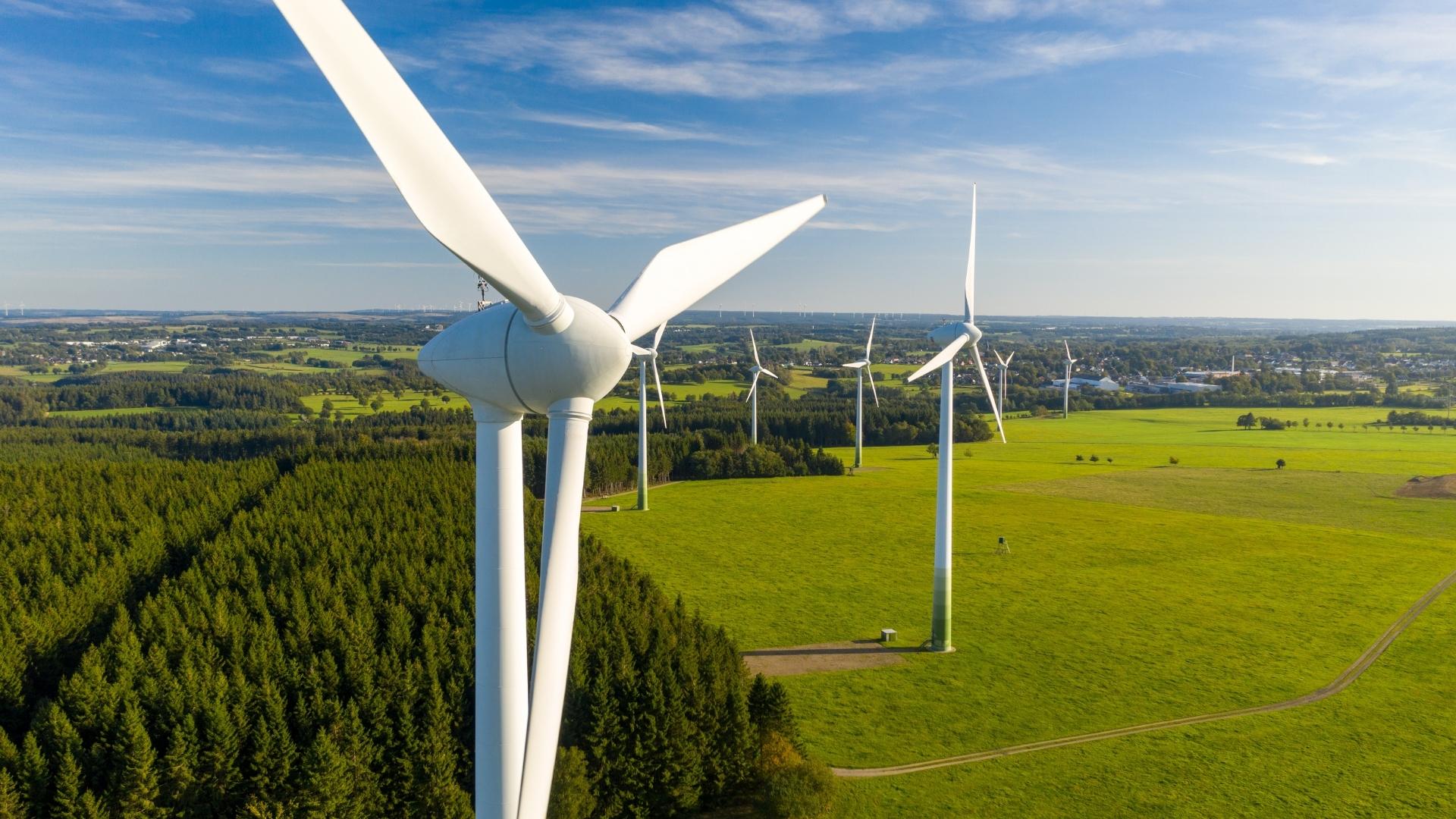Powering the Future: The Role of Renewables in the Energy Transition

The global energy sector is undergoing a monumental shift from fossil-based energy production and consumption to renewable sources. As investors and consumers place more value on environmental and social responsibility, and as the effects of climate change continue to make headlines, corporations across all major industries are setting ambitious goals for net-zero emissions by 2050.
Achieving this transition towards renewable and low-carbon energy will require long-term collective commitment to decarbonization and continuous improvements in technology. At Lamons, we develop and manufacture sealing and attachment solutions for the most critical industry applications — and we see tremendous opportunities to engineer solutions that support all our energy customers throughout the energy transition.
The Path to Net-Zero Emissions by 2050
The key drivers behind the energy transition are clear: a societal push towards limiting climate change, hard-hitting government mandates and incentives, and dramatic changes in energy supply, demand, and production costs that are creating greater opportunities in the renewable sector.
Fueled by these factors, corporations are racing to share their ambitions for emissions reduction. BP is aiming for net-zero by 2050. Coca-Cola and General Motors have their sights set on 2040. According to a report by the Energy and Climate Intelligence Unit, at least 21% of the world’s 2,000 largest public companies have committed to net-zero targets. As 2050 approaches, many companies have chosen a three-pronged approach to achieving carbon neutrality: decarbonization, digitalization, and diversification.
Decarbonization refers to reducing (and eventually eliminating) the use of carbon-based fuels for electricity generation, moving towards renewable energy sources like wind, solar, and hydropower while pursuing carbon offsets and carbon capture. Digitalization is the use of digital technology to improve the productivity and sustainability of energy systems while reducing the energy consumption associated with providing goods and services. Diversification means employing different sources of energy, along with multiple suppliers and means of transportation to decrease dependence on a single energy source.
Although enthusiasm for this transition to a clean energy economy is at an all-time high, the practical mechanics will require strong regulation, constant innovation, and long-term commitment. A brief overview of the state of major renewable sectors demonstrates the energy industry’s ability to adapt to new challenges.
Current Momentum and Future Opportunity in Renewables
Despite supply chain pressures, the U.S. wind and solar energy boom seems to be going strong, with deployments of 21.5 GW of solar and 7.6 GW of wind planned for 2022. Likewise, the International Energy Agency (IEA) predicts hydropower generation to hold strong as the world’s largest source of renewable electricity generation for decades to come, increasing by 230 GW globally between 2021 and 2030.
The Inflation Reduction Act of 2022 includes an estimated USD $370 billion in energy-related spending, some of which ensures future tax credits for solar and wind sectors as well as benefits to hydrogen power. This legislation, while signaling a large-scale commitment to renewable energy growth, has also reignited an all-too-common misconception: that wind and solar are just too expensive, and only appear competitive because government incentives are leaning on the scale. In fact, that’s just not true. Government incentives do serve their purpose, helping to jump-start the innovations that drove the price of solar electricity down by 89% and onshore wind by 70% between 2009 and 2019. According to the Oxford Martin Programme on Global Development, wind and solar have now become the cheapest sources for new power generation in most of the world, even without incentives. That means power from new wind and solar is now cheaper than new fossil fuels. As of 2020, the price of electricity (expressed in levelized costs of energy) from a newly built gas power plant is USD $56 per MWh. For a new onshore wind power plant, the price is USD $41 per MWh — and the cost of energy from a new solar power plant is just USD $40 per MWh.
Following in the footsteps of wind and solar, hydrogen power continues to signal its future potential. As large energy companies increase their investments, hydrogen production has become a hot topic. One common misconception about hydrogen production is that it inevitably creates a large amount of greenhouse gas (GHG) through steam methane reforming (grey hydrogen).
True, grey hydrogen production creates hydrogen from methane, and emits a lot of CO2 in the process. Although blue hydrogen production uses the same method as grey hydrogen, it also applies carbon capture technology to reduce emissions. Green hydrogen produces hydrogen through electrolysis, using water and renewable energy sources (like wind, solar, or hydroelectric power). That means green hydrogen emits no GHG — and as green hydrogen technology improves, it will become more and more cost-effective.
Accelerating the Energy Transition One Innovation at a Time
At Lamons, we’ve supported the oil and gas industry for decades, and we understand the challenges posed by the energy transition. This journey into new territory will require thoughtful strategy and countless innovations at the micro- and macro-level. The steady stream of new technologies being developed will create the need for new mechanical requirements and specialized components. At Lamons, we’ve increased our focus on Research and Development to support all our energy customers throughout the energy transition. As part of our commitment to sustainability, we aim to create innovative sealing and attachment solutions that answer the needs of renewable energy sectors — and even become the standard components of the future energy industry.
 Justinn General, Product Design Engineer
Justinn General, Product Design Engineer